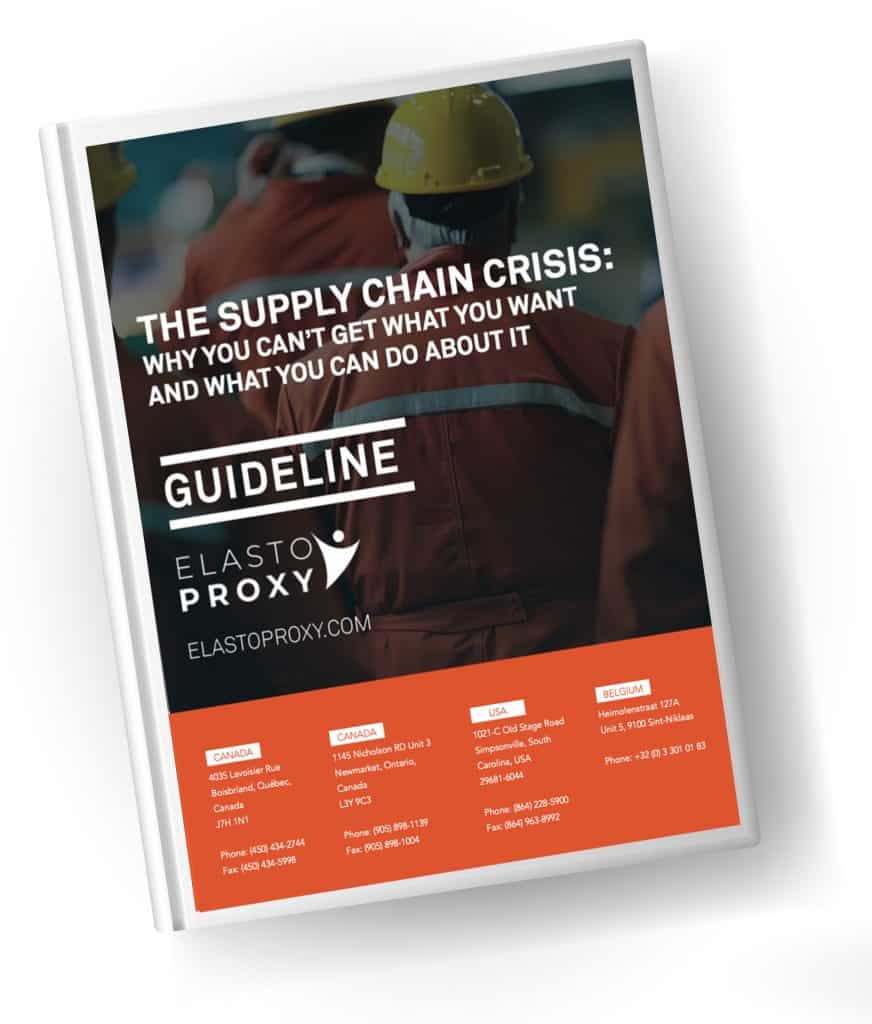What’s causing the silicone shortage and when will it end? If you need silicone seals and gaskets, thermal and acoustic insulation, or molded silicone parts, you may have been told that the materials you need aren’t available, or that it will take a while for them to arrive. In part, that’s because silicones are used in everything from automotive, aerospace, and medical applications to consumer products and electronic devices. Of course, the COVID-19 pandemic is also to blame and has constrained supplies of everything from computer chips to construction materials.
Yet, the silicone shortage isn’t just about stock-outs and slow deliveries of raw materials and finished goods. While it’s true that many silicone manufacturers don’t have enough skilled labor or available production equipment, the problems begin farther down the supply chain with ingredients called monomers. Unfortunately, these supply chain disruptions are occurring at the same time there is increased demand for silicones, ongoing problems with shipping and logistics, and uncertainty about everything from trade disputes to government policies.
What’s causing the silicone shortage?
Last year, during the height of the COVID-19 pandemic, several major monomer suppliers halted their operations. In China, a Dow/Wacker joint venture was closed for an extended period of time. In the United States, a Wacker facility that produced fumed silica went off-line. Today, there are too few North America facilities that make this monomer. Consequently, producers in Asia need to fill both higher regional demand and increased Northern American and European orders. Meanwhile, manufacturers of silicone products in China are now facing challenges that include restrictions on electricity usage.
Globally, demand for silicone is higher than it was in 2020, when many advanced economies were consumed with the pandemic. However, this increased demand is more of a return to normal than a revolutionary development. To be sure, current demand seems to be soaring – if you compare it to last year. This demand comes from industrial and medical buyers as well from manufacturers of consumer products. If the U.S. increases infrastructure spending, there will also be greater commercial demand because silicone is a building material.
Problems with shipping and logistics are also to blame. For starters, there aren’t enough available shipping containers or plastic wrapping. Because of the pandemic, some buyers of new shipping containers canceled their 2020 orders. When older containers became available for shipments, these containers were sometimes halfway around the world and still waiting to be refilled. Disruptions in air freight have also delayed the return of some containers to where they’re needed. Since there weren’t (and aren’t) enough docks or dock workers, problems with trans-oceanic shipments continue. On the ground, there are now issues with rail transportation in Canada and a shortage of truck drivers in the United States.
What are some solutions to the silicone shortage?
Silicone’s supply-side problems are expected to improve when major capital expansions are completed. Dow, Wacker Chemie A.G., Momentive, Elkem, and Shin-Etsu Chemical Co. Ltd. all have projects in the works, but some of these expansions were announced during the last silicone shortage (2017 – 2018) and have yet to begin. For U.S. buyers, greater domestic production of silicone monomers would help. What’s happening, however, is that some U.S. producers are guarding against overcapacity while China continues to invest heavily in basic silicone production.
Solutions to a shortage of skilled manufacturing workers, such as expanded training programs, could also help the silicone industry. In addition, increased automation and efficiency improvements could support higher-volume production. What silicone buyers need now, however, are more immediate and achievable solutions. If your current silicone supplier is limiting your purchases, it’s time to look for other qualified sourcing options. Don’t wait until next year either. Predictions that the silicone shortage would be over by Q3 or Q4 2021 have proven to be incorrect, so now is the time to plan for 2022.
Do you have a production forecast that includes the silicones you’ll need next year? Share it with Elasto Proxy and send us a blanket purchase order. We’ll order everything you need so you can get a volume discount, even if you buy in lower minimum order quantities (MOQs). We’ll then store these materials in our warehouses, saving you space on your factory floor. When you need silicones, we’ll release them from one of our North American or European facilities. You won’t have to worry about trans-oceanic shipping delays – and you won’t have to pay for materials until they arrive, which lets you conserve cash.
What if you don’t have a production forecast?
If you’ve worked with Elasto Proxy before and don’t have a production forecast, we can help you to create one based on your previous usage. The current silicone shortage isn’t ending any time soon, so now is the time to think ahead to 2022. Whether you’ve done business with us before or are learning about Elasto Proxy for the very first time, we want you to know that we’re more than just a rubber fabricator and distributor. We’re a value-added manufacturer and a supply chain partner. Contact us to learn more.
Download the Supply Chain Crisis White Paper. It is FREE!
Discover why you can’t get what you want and what you can do about it.













